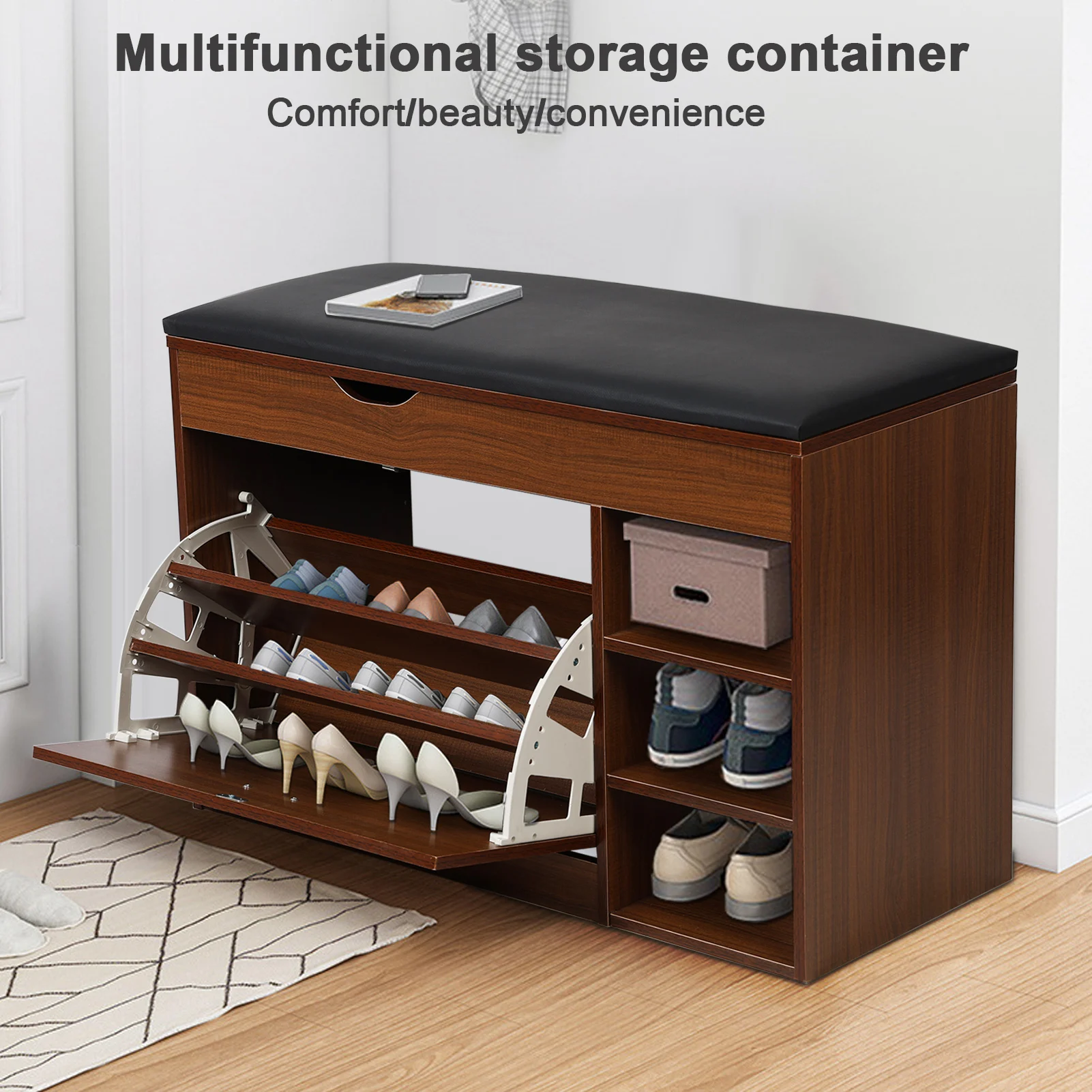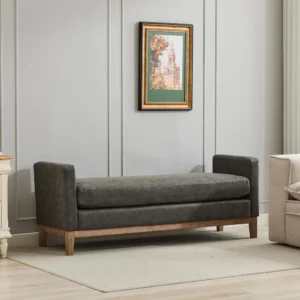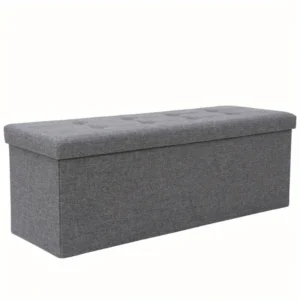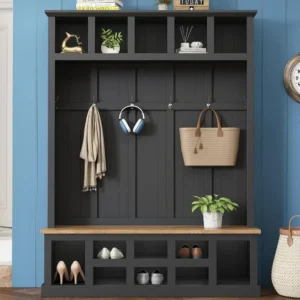Understanding Small Entryway Challenges & The Power of Strategic Organization
Walking into a cluttered entryway sets the wrong tone for your entire home. When that entryway is small—typically under 30 square feet (2.8 square meters)—the challenges multiply. These compact spaces quickly become chaotic collection points for everyday items with no designated home.
Many homeowners struggle with:
- Daily clutter accumulation that seems impossible to control
- Shoes piling up and creating tripping hazards
- Coats and bags with nowhere to go except draped over furniture
- Morning chaos when everyone rushes to find their belongings
- The frustration of a messy first impression for guests
This is where the humble entryway bench becomes a game-changer. More than just seating, a well-chosen bench creates a foundation for organization by combining multiple functions: a place to sit while putting on shoes, a surface for setting down items, and often, valuable hidden storage.
The impact of a strategically organized entryway extends beyond mere aesthetics. An efficient entry zone streamlines your daily comings and goings, reducing stress and saving precious minutes during busy mornings. Many homeowners discover that space-saving entryway benches completely transform how they use and experience their home’s entrance.
Planning Your Organized Small Entryway: Measurement & Assessment
Before purchasing any organizational solutions, take time to thoroughly assess your space. This foundational step ensures that everything you select will actually fit and function in your specific entryway.
Start by taking detailed measurements:
– Width of the available wall space
– Depth from wall to the edge of walkable area (accounting for door swing)
– Height (floor to ceiling)
– Door clearance (how far doors swing into the space)
Next, evaluate traffic patterns. Watch how people naturally move through your entryway. Where do they pause? Where do they tend to drop items? Creating organization that works with these natural behaviors—rather than against them—significantly increases the likelihood of maintaining order.
Conduct an honest inventory of what actually needs to live in your entryway. Many items currently cluttering this space might be better stored elsewhere. Create three categories:
- Essential daily items (keys, everyday shoes, current-season jackets)
- Frequent-use items (dog leashes, reusable shopping bags)
- Occasional items (guest coats, seasonal gear)
Consider your household dynamics as well. A family with young children has different entryway needs than a couple of adults. Pets introduce additional storage requirements for leashes, waste bags, and paw-cleaning supplies.
Finally, think seasonally. Your entryway organization should adapt to accommodate bulky winter gear or summer accessories as needed. Creating an organization system with some flexibility allows for these natural seasonal shifts without requiring a complete reorganization.
The insights gained from this assessment process create the roadmap for all your organizational decisions, especially when organizing narrow entryway spaces where every inch matters.
Selecting the Ideal Bench for Your Small Entryway
The bench you choose serves as the foundation of your entryway organization system, making this decision particularly important. For small spaces, consider these bench categories:
Storage Benches
These multifunctional pieces feature built-in storage through lift-top compartments, drawers, or cubbies. They maximize functionality but require careful measurement to ensure they don’t overwhelm the space.
Slim Profile Benches
Specifically designed for narrow spaces, these benches measure under 12 inches (30 cm) deep while still providing comfortable seating. Their minimal footprint makes them ideal for very tight entryways.
Open-Bottom Benches
These provide seating while maintaining an airy feel that helps small spaces appear larger. The open area underneath can be utilized for shoe storage with baskets or racks.
Corner Benches
Perfect for awkward layouts, these L-shaped pieces make use of often-wasted corner space, turning it into functional seating and storage.
When selecting materials, remember that entryway furniture endures significant wear. Look for durable woods, metal frames, and fabrics that can withstand high traffic and frequent use. Wipeable surfaces prove especially valuable for homes with children or pets.
Size guidelines for small entryways typically recommend benches between 18-42 inches (45-107 cm) wide. Anything larger risks overwhelming the space, while anything smaller may not provide adequate functionality.
Consider how your bench will complement your home’s existing style. A bench that feels like a natural extension of your décor is more likely to become a cherished, permanent organizational solution rather than a temporary fix.
For inspiration and specific options designed for compact spaces, browse our collection of space-saving entry benches that balance form and function beautifully. Our small entryway bench collection offers various designs specifically sized for limited spaces.
Maximizing Storage Under and Around Your Entryway Bench
Once you’ve selected the perfect bench, it’s time to maximize its organizational potential through strategic use of the surrounding space.
Under-Bench Organization:
For benches with open bottoms, create defined storage zones using:
- Low-profile baskets sized to slide easily underneath (ideally 6-10 inches/15-25 cm tall)
- Divided shoe racks that make use of vertical space
- Canvas bins with labels for different family members or categories
- Custom-sized trays for wet or muddy shoes
For storage benches with internal compartments:
- Use drawer dividers to separate small items like gloves and scarves
- Implement stackable containers to maximize vertical space
- Consider vacuum bags for seasonal item storage
- Install small hooks inside lift-tops for hanging keys or small accessories
Beside-Bench Solutions:
In extremely narrow entryways, every inch counts. Maximize space beside your bench with:
- Slim rolling carts that can be pulled out when needed
- Wall-mounted storage that doesn’t take up floor space
- Narrow shelving units designed for tight spaces
- Vertical shoe racks that utilize height rather than width
Create distinct zones around your bench to enhance functionality:
– A drop zone for mail and keys
– A dedicated seating area kept clear for putting on shoes
– A transition space where items move from “outside” to “inside” status
For seasonal rotation, implement a system where off-season items are stored elsewhere, perhaps in labeled bins in a closet or basement. This keeps your entryway focused on current needs rather than housing rarely-used items.
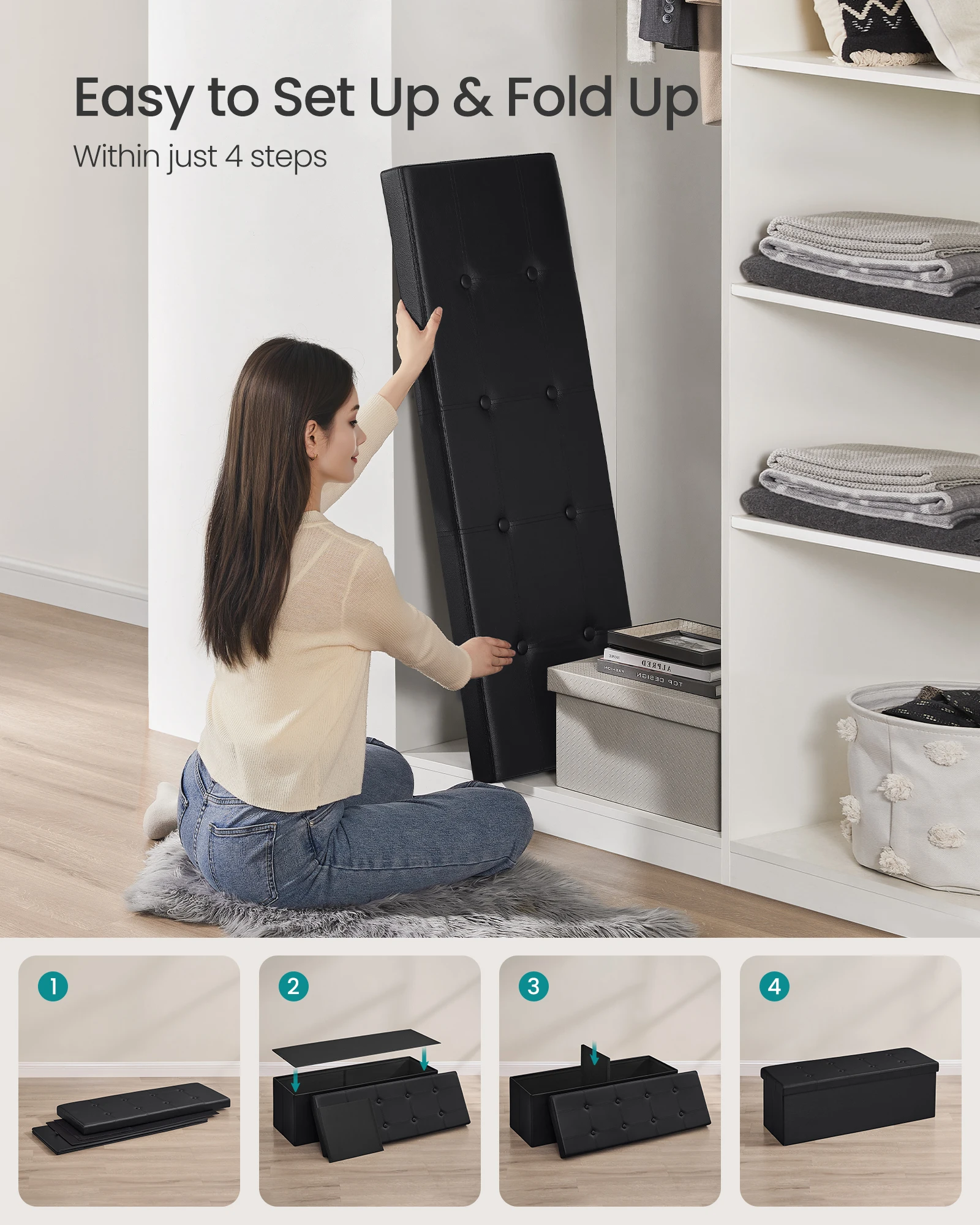
Our collection of entryway bench storage solutions offers various options designed to maximize organization while maintaining a cohesive, attractive appearance.
Vertical Storage Solutions: Using Wall Space Above and Around Your Bench
Small entryways demand thinking beyond floor space. The vertical real estate above and around your bench offers tremendous organizational potential when properly utilized.
Wall-Mounted Hook Systems:
Install hooks at strategic heights:
– Adult coat hooks: 60-66 inches (152-168 cm) from the floor
– Children’s hooks: 30-40 inches (76-102 cm) from the floor
– Bag/purse hooks: 48-54 inches (122-137 cm) from the floor
Consider hook type based on weight capacity:
– Decorative hooks for light items like scarves and small bags
– Heavy-duty hooks or rack systems for multiple coats
– Specialized systems with built-in shelving for maximum functionality
Floating Shelves:
Install floating shelves above your bench to create display and storage space without the visual weight of cabinet systems:
– Place daily-use items on lower shelves (within easy reach)
– Store decorative or less frequently used items on higher shelves
– Use attractive bins and baskets on shelves to conceal smaller items
– Leave some negative space to prevent a cluttered appearance
Space-Maximizing Wall Solutions:
- Narrow cabinets (6-8 inches/15-20 cm deep) provide concealed storage without protruding too far into the walkway
- Corner shelving units utilize often-wasted angled wall space
- Mail organizers with key hooks combine multiple functions in one wall-mounted unit
- Pegboard systems offer customizable hook arrangements that can change with your needs
Multi-Function Solutions:
Save space with items that serve dual purposes:
– Mirror with attached hooks or small shelf
– Wall-mounted fold-down desk that doubles as entryway table when needed
– Picture frames with hidden storage compartments
– Decorative wall panels with concealed storage
When installing wall storage, ensure you’re using appropriate anchors and finding studs for heavier items. For renters, consider tension rod systems or command hooks that won’t damage walls.
Browse our collection of bench and hook combinations designed to maximize vertical storage while maintaining a cohesive look throughout your entryway.
Creating Dedicated Storage Zones for Essential Entryway Items
Effective organization requires giving each category of items its own dedicated space. This system elimination creates efficiency and prevents the “dump zone” effect that plagues many entryways.
Shoe Organization:
The average person regularly wears 4-7 pairs of shoes, meaning a family of four could have 16-28 shoes competing for entryway space. Address this challenge by:
- Implementing a “current season only” rule for entryway storage
- Using under-bench shoe racks with defined spots for each family member
- Employing vertical shoe organizers that stack footwear to maximize space
- Creating a “one in, one out” system where extra shoes get stored elsewhere
Coat and Jacket Management:
Rather than allowing coats to pile up, create an efficient system:
– Assign specific hooks for each family member
– Install a second row of hooks for guests or seasonal rotation
– Use slim, uniform hangers if using a small coat rack instead of hooks
– Implement seasonal rotation, storing off-season outerwear elsewhere
Mail and Paper Control:
Paper clutter can quickly overwhelm a small space:
– Mount a wall sorter with designated spots for incoming mail, bills, and school papers
– Create a processing station with a shredder nearby
– Establish a “touch it once” rule—mail gets sorted immediately upon entering
– Use decorative boxes or folders that blend with your décor for papers requiring action
Keys and Small Items:
These tiny essentials often create the biggest frustration when misplaced:
– Install a small key hook panel or magnetic strip at eye level
– Use a decorative dish or small tray on the bench for temporary placement
– Consider a wall-mounted pocket organizer for sunglasses, phone chargers, and other small items
– Label storage spots for family members to enhance compliance
Weather Gear Management:
Umbrellas, gloves, and other seasonal accessories need accessible but contained storage:
– Use narrow bins that slide under the bench for gloves and hats
– Install a slim umbrella stand beside the bench or wall-mounted umbrella hooks
– Create a dedicated “wet zone” with a water-resistant mat or tray
– Employ hanging mesh bags for items that need to dry after use
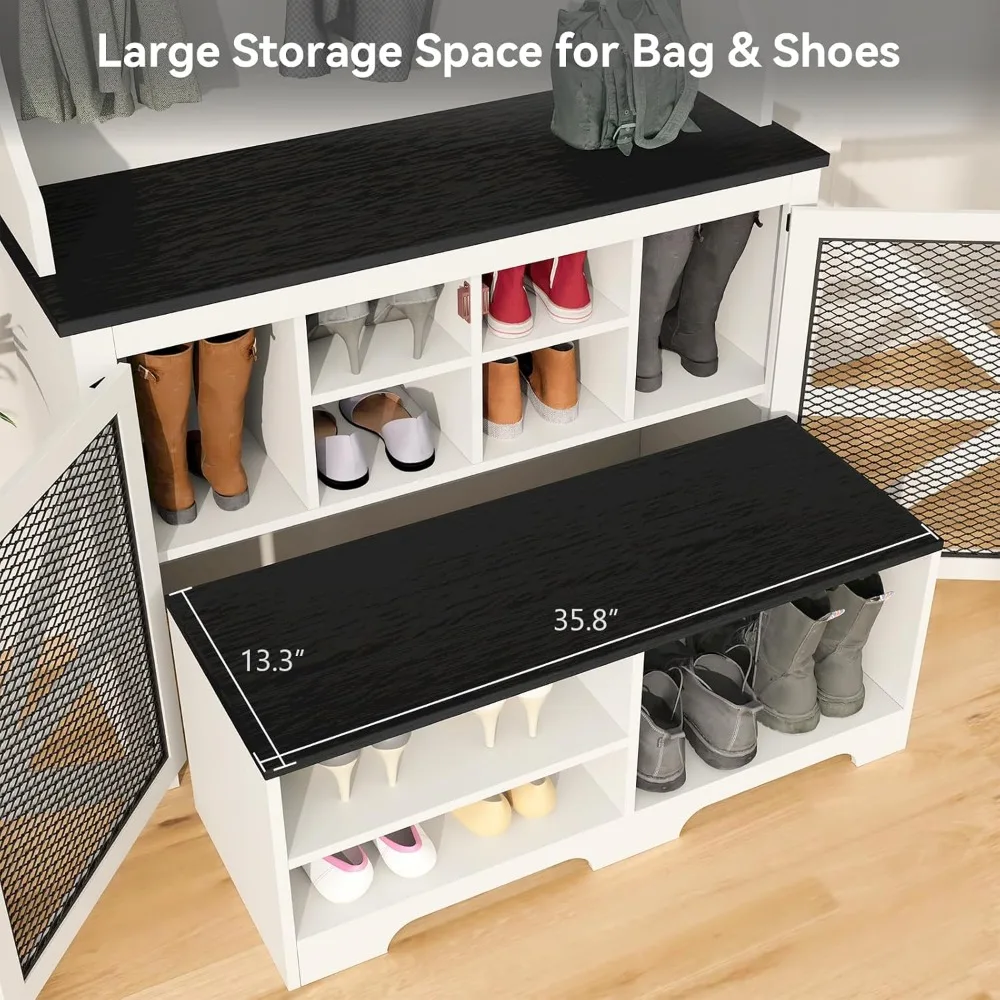
For more specialized solutions, our guide to organizing shoes in the entryway provides detailed strategies for managing this common entryway challenge.
Enhancing Function with Style: Making Your Small Entryway Beautiful
Organization doesn’t mean sacrificing aesthetics. In fact, a well-designed entryway system enhances your home’s beauty while improving functionality.
Strategic Lighting:
Proper lighting transforms how a small space feels:
– Install wall sconces to provide illumination without taking up surface space
– Use a small table lamp on the bench or nearby surface for warm, welcoming light
– Consider LED strip lighting under shelves to highlight decorative elements
– Ensure pathways are well-lit to prevent tripping in a compact space
Mirror Magic:
Mirrors serve dual purposes in small entryways:
– Place a mirror directly across from a window to bounce natural light throughout the space
– Use a full-length mirror on the back of a door for last-minute appearance checks
– Consider a decorative mirror above your bench to create the illusion of more space
– Look for mirrors with slim frames to maximize reflective surface area
Color Strategy:
Color choices significantly impact how spacious your entryway feels:
– Light, neutral colors on walls and major pieces create an airy feeling
– Add personality through smaller accessories that can be easily changed
– Create visual continuity by using similar tones for your bench and wall color
– Consider a semi-gloss paint finish to reflect more light
Thoughtful Accessories:
Select a few impactful decorative elements rather than many small items:
– One statement piece of wall art or a striking mirror
– A single high-quality lamp or distinctive light fixture
– A beautiful runner that guides the eye through the space
– A small plant or flower arrangement that brings life without cluttering
Textile Touches:
Soft elements add warmth to functional spaces:
– A thin bench cushion in a durable, washable fabric
– A small, flat-weave rug with a low profile that won’t catch on doors
– Seasonal pillow covers that can be changed for variety without adding bulk
– Weather-resistant door mats that trap dirt while enhancing curb appeal
For additional ideas on creating an entryway that welcomes guests while serving your organizational needs, explore our guide to creating welcoming entryways.
Maintenance Systems: Keeping Your Entryway Organized Long-Term
Creating organization is only half the battle—maintaining it is where many homeowners struggle. Implement these systems to ensure your entryway remains functional and beautiful for the long term.
Daily Reset Routine:
Develop a 5-minute end-of-day reset habit:
– Return items to their designated homes
– Hang up coats that may have been dropped
– Sort any mail or papers that accumulated
– Wipe down surfaces that collect dust or fingerprints
– Check for items that don’t belong in the entryway and relocate them
Weekly Maintenance:
Schedule a slightly deeper organization session once a week:
– Vacuum or sweep under and around the bench
– Wipe down hooks and handles that collect oils from hands
– Return any “visiting” items to their proper locations
– Evaluate what’s working and what needs adjustment
– Clean mirrors and dust decorative items
Seasonal Reorganization:
Four times a year, coinciding with seasonal changes:
– Rotate clothing and accessories based on weather needs
– Deep clean all storage containers and surfaces
– Reassess your system and make necessary adjustments
– Purge items that haven’t been used in the previous season
Family Involvement:
Create systems that everyone can follow:
– Label hooks and baskets for younger family members
– Position children’s items at accessible heights
– Create simple visual guides for where things belong
– Implement positive reinforcement for maintaining organization
Prevention Strategies:
Address clutter before it starts:
– Use the “one in, one out” rule for clothing and shoes
– Process mail immediately rather than setting it down
– Keep a donation bag or box nearby for items no longer needed
– Regularly evaluate what really needs to live in the entryway
For households with multiple family members and high traffic, our guide to organizing busy entryways offers additional strategies for maintaining order amid daily chaos.
Solutions for Unique Small Entryway Challenges
Every home presents its own organizational challenges. Here are solutions for some of the most common entryway dilemmas.
Door Interference Issues:
When doors swing into your entryway space:
– Install door stoppers to control the swing arc
– Position furniture far enough away from door paths
– Consider replacing standard doors with space-saving sliding or pocket doors
– Use over-the-door organizers on the inside of entry doors
Creating an Entryway Where None Exists:
For open floor plans without a defined entry:
– Use a bench and rug to visually define an entryway zone
– Create a partial divider with a console table or low bookcase
– Install wall hooks to establish the area as a drop zone
– Use decorative elements to create visual boundaries
Extremely Narrow Spaces:
For entryways under 3 feet (91 cm) wide:
– Choose wall-mounted solutions instead of floor-standing furniture
– Select a very narrow bench (12 inches/30 cm or less in depth)
– Utilize corner spaces with specially designed corner benches
– Consider a fold-down bench that can be collapsed when not in use
Shared Entryways:
For multi-unit buildings with shared entry spaces:
– Create a compact, self-contained system just inside your door
– Use labeled bins to keep your items separate from others
– Consider portable solutions that can be moved if needed
– Focus on vertical storage to minimize floor footprint
Multi-Functional Entryways:
When your entryway must serve multiple purposes:
– Define distinct zones for different activities
– Choose furniture that serves multiple functions (bench/desk combination)
– Use modular pieces that can be reconfigured as needed
– Implement hidden storage to maintain a clean look despite multiple uses
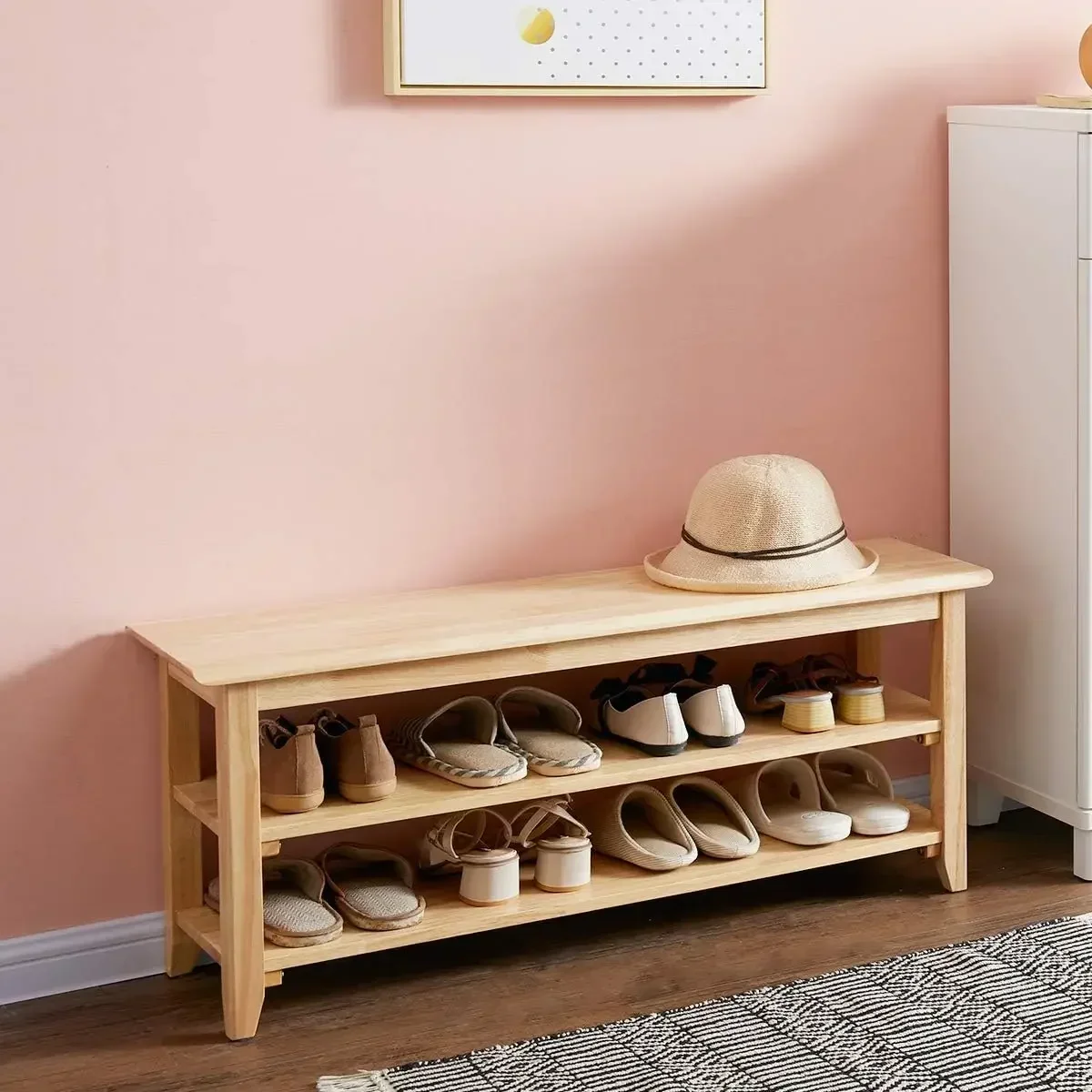
Rental Property Limitations:
When you can’t make permanent changes:
– Use freestanding furniture that doesn’t require wall mounting
– Consider tension rod systems for vertical storage
– Look for over-the-door solutions that don’t require installation
– Use command hooks and removable adhesive solutions for temporary organization
For particularly challenging narrow spaces, explore our collection of narrow entryway benches specifically designed to fit in limited floor spaces.
Practical Storage Accessories That Complement Your Entryway Bench
The right accessories transform a simple bench into a complete organizational system. These complementary pieces enhance functionality while maintaining style coherence.
Basket and Bin Solutions:
Select containers that maximize your bench’s potential:
– Under-bench baskets should be 2-3 inches (5-7.5 cm) shorter than the bench height for easy access
– Choose bins with labels or clear fronts for easy identification of contents
– Consider divided baskets to separate items by family member or category
– Look for washable options that can handle dirt from shoes and outdoor items
Drawer Organizers:
For benches with built-in drawers:
– Use small dividers to create compartments for gloves, scarves, and other accessories
– Install shallow trays for keys, sunglasses, and other small items
– Consider expandable dividers that adjust to your changing needs
– Look for fabric organizers that reduce noise when opening and closing drawers
Entryway Bench with Cushion, Mudroom Bench with Cushion, Shoe Bench for Entryway
$1,186.63 Select options This product has multiple variants. The options may be chosen on the product pageCoat Rack Shoe Bench, Corner Entryway Bench, Corner Hall Tree, Shoe Bench for Entryway
$313.58 Select options This product has multiple variants. The options may be chosen on the product pageEntryway Bench with Back, Modern Entryway Bench, Shoe Bench for Entryway
Price range: $463.13 through $474.44 Select options This product has multiple variants. The options may be chosen on the product pageEntryway Bench with Shelf Storage, Shoe Bench for Entryway, Shoe Storage Bench
$194.08 Select options This product has multiple variants. The options may be chosen on the product pageCorner Entryway Bench, Entryway Bench with Cushion, Modern Entryway Bench, Shoe Bench for Entryway
$476.34 Select options This product has multiple variants. The options may be chosen on the product pageBench with Hooks and Storage, Entryway Hall Tree, Mudroom Bench with Cubbies, Mudroom Bench with Shoe Storage
$818.38 Select options This product has multiple variants. The options may be chosen on the product page
Coordinating Wall Systems:
Create a cohesive look by pairing your bench with complementary wall organizers:
– Mirror frames that match your bench wood tone or finish
– Hook boards in coordinating materials
– Floating shelves that align with your bench’s design aesthetic
– Mail organizers that reflect your bench’s style (modern, rustic, etc.)
Weather Protection:
Protect your organization system from the elements:
– Water-resistant boot trays sized to fit your space
– Washable runner rugs that trap dirt before it spreads
– Umbrella stands with drip trays to contain moisture
– All-weather door mats that coordinate with your interior design
When selecting accessories, consider not just your current needs but how your entryway usage might evolve. Choose quality pieces that will last through changing seasons and family circumstances. Our specialized shoe storage benches offer integrated solutions that eliminate the need for multiple separate organizers.
A small entryway with a bench can be transformed from a chaotic catch-all to an organized, welcoming introduction to your home. By thoughtfully selecting the right bench, maximizing vertical space, creating dedicated storage zones, and maintaining simple systems, even the most compact entry can function beautifully for everyday life.
Remember that organization is never “one-size-fits-all.” The perfect system for your home reflects your family’s specific needs, habits, and aesthetic preferences. At Nested Goods, we believe that practical storage solutions should enhance both the function and beauty of your home—starting right at the entryway.

